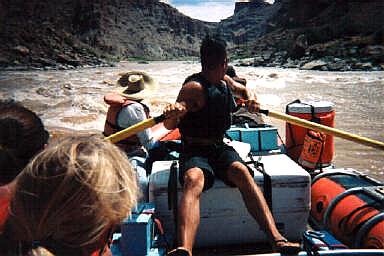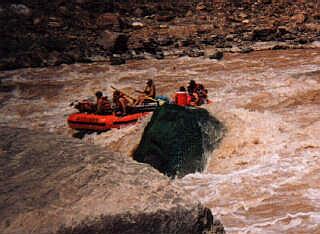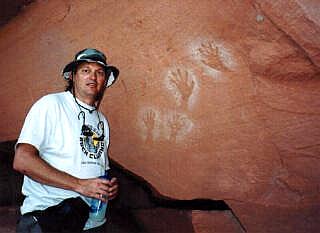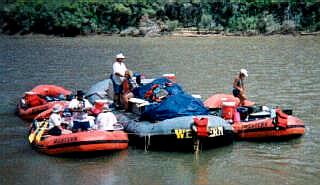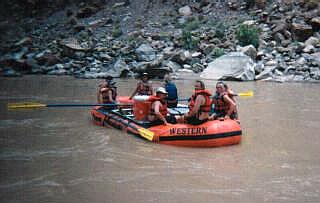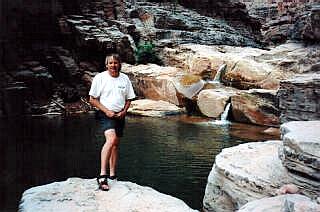[ Homepage ] [ Introduction ] [ Warning ] [ Ratings ] [ Ethics ] [ Feedback ] [ Updates ]
Major John Wesley Powell navigated the rapids in 1869 and gave Cataract Canyon its name. Cataract Canyon slices its way through Canyonlands National Park. Prior to becoming a National Park in 1964, Canyonlands and particularly Cataract Canyon was a "no man's land". French trapper Denis Julien made his way up the canyon in 1836 and left his inscription near the confluence or the Green and Colorado Rivers.
A standard trip through Cataract Canyon lasts four days and covers 100 river miles from Moab, Utah, to Hite Marina on Lake Powell. The information presented on this page is for those planning to use a professional guide service. Privateers or "River Rats" doing this trip need technical white water experience and should use there own judgement on safety and other issues. Most of the professional guide services will take children 10 years of age and older. Some professional guide services will take children as young as 7 years of age. Cataract Canyon's rapids rival those of the Grand Canyon during spring run-off. This is because the Colorado River is not dammed above Cataract Canyon. Water levels have been known to exceed 100,000 cubic feet per second. If it's wild rapids you want, reserve your trip in May or June. The in-stream flows of Cataract Canyon will drastically decline as summer lengthens. The summer time rapids are smaller. Most expeditions begin using smaller rafts as the summer begins which puts the excitement into summer rafting. However, regardless of the time of year, Cataract is full of excitement. Famous rapids of Cataract Canyon include Brown Betty, Mile Long and Big Drops I and II. Canyonlands is home to many animals such as big horn sheep, mule deer, great horned owls, whiptail leopards, collared lizards, and rattlesnakes. Cataract Canyon is a geological paradise. A geological stratum is exposed dating back some 300 million years. Fossils are found in abundance in the Formosa and Hermosa formations. Indians of the Anasazi culture inhabited the area some 800 to 1300 years ago, leaving many clues to their lifestyles.
Western River Expeditions
[ Homepage ] [ Introduction ] [ Warning ] [ Ratings ] [ Ethics ] [ Feedback ] [ Updates ] © Copyright 2000, Shane Burrows |
